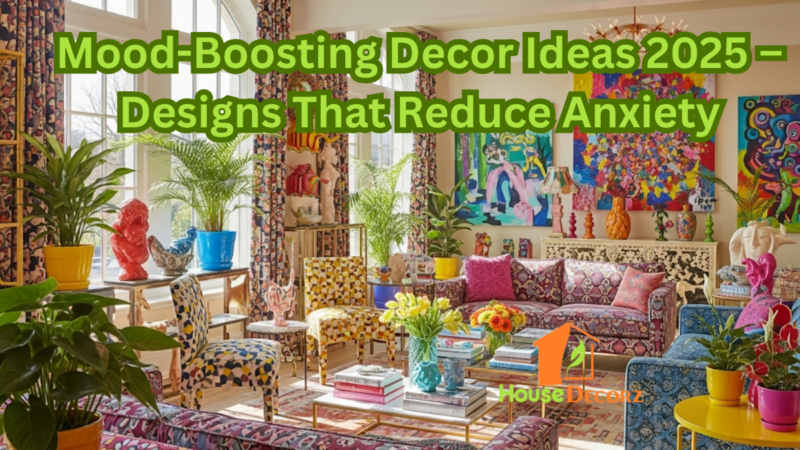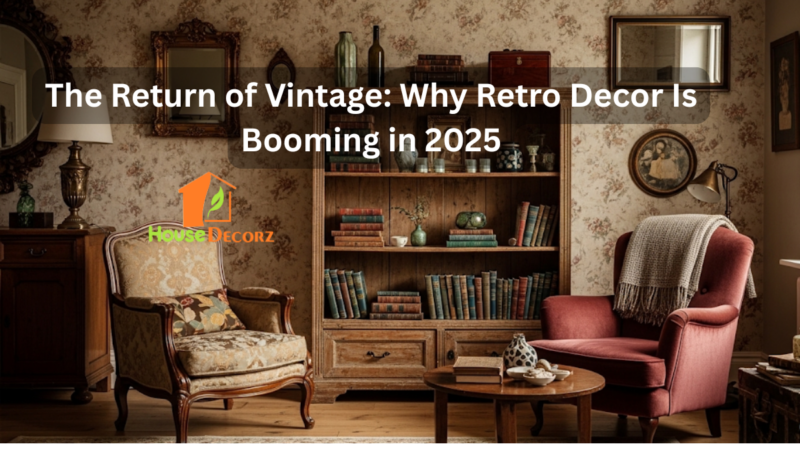10 Sustainable Furniture Ideas That Are Good for the Earth and Your Home

Decorating your home can be both stylish and sustainable. As awareness of environmental issues continues to grow, more people are seeking sustainable furniture ideas that reduce their carbon footprint while enhancing the beauty and functionality of their living spaces.
Fortunately, eco-conscious design doesn’t mean compromising on comfort or style. With innovative approaches and ethical sourcing, it’s easier than ever to furnish your home in a way that’s kind to the planet.
Here are ten creative and impactful furniture ideas that blend sustainability, practicality, and aesthetics.
Best Sustainable Furniture Ideas
1. Furniture Made from Recycled Materials
Recycled material furniture is at the heart of sustainable interior design. These pieces are crafted from repurposed plastics, metals, and even discarded wood, reducing the need for new raw materials and diverting waste from landfills.
Example: Tables made from reclaimed industrial metal or chairs formed from ocean plastics not only reduce pollution but also add a modern, industrial flair to your home.
2. Upcycled Vintage Pieces
Upcycling breathes new life into old furniture. Instead of tossing outdated pieces, consider repainting, reupholstering, or reconfiguring them to serve new purposes.
Tip: A worn-out dresser can be transformed into a bathroom vanity or a vintage door turned into a headboard. Upcycling not only reduces waste but adds unique character to your space.
3. Bamboo Furniture
Bamboo is one of the fastest-growing renewable resources, making it an ideal choice for sustainable furniture ideas. Strong, lightweight, and naturally pest-resistant, bamboo is perfect for everything from bed frames to shelving units.
Eco Benefit: Bamboo grows without the need for pesticides and regenerates quickly, making it more sustainable than traditional hardwoods.
4. Reclaimed or Eco Friendly Wood
Using eco friendly wood, such as reclaimed timber or FSC-certified (Forest Stewardship Council) wood, ensures that the material is harvested responsibly or repurposed from previous use.
Example: Reclaimed barn wood coffee tables or FSC-certified oak bookshelves bring rustic charm while supporting forest conservation efforts.
5. Modular and Multi-Functional Designs
Sustainable furniture often emphasizes longevity and adaptability. Modular pieces can be reconfigured for various uses or moved between rooms as needs change, reducing the likelihood of needing replacements.
Inspiration: A modular sofa with detachable sections can become a guest bed, or a coffee table with built-in storage can double as a toy chest.
6. Furniture Made with Natural Fabrics
For upholstered pieces, opt for natural, biodegradable fabrics like organic cotton, hemp, or wool instead of synthetic materials.
Why It Matters: Synthetic fabrics often contain harmful chemicals and take decades to decompose, while natural fabrics are more breathable, non-toxic, and earth-friendly.
7. Low-VOC Finishes and Glues
Volatile Organic Compounds (VOCs) are chemicals commonly found in paints, stains, and adhesives used in furniture production. Choosing furniture with low or no VOCs promotes healthier indoor air quality.
Look For: Certifications like GREENGUARD or labels that state “low-VOC” when shopping for sustainable furniture.
8. Locally Made Furniture
Buying from local artisans and manufacturers not only supports your community but reduces the carbon emissions associated with long-distance shipping.
Pro Tip: Visit local furniture markets or partner with local woodworkers who often use eco friendly wood and recycled materials in their designs.
9. Flat-Pack and Easily Transportable Designs
Flat-pack furniture requires less packaging and space during transportation, lowering carbon emissions. It also encourages consumers to participate in the assembly process, creating a deeper connection with their furniture.
Brands to Explore: Companies like IKEA are increasingly offering sustainable flat-pack options made from recyclable materials.
10. Invest in Timeless, High-Quality Pieces
Perhaps the most sustainable choice is buying well-crafted furniture that will last for decades. Avoiding short-lived, trendy items means fewer resources are used over time.
Sustainability Tip: Look for solid construction, durable fabrics, and classic styles that won’t go out of fashion quickly.
Recommendation
Top 5 Space-Saving Furniture Ideas for Small U.S. Homes in 2025
Top 5 Furniture Retailers in the U.S. Offering Stylish Pieces Under $500 (2025 Edition)
How to Buy Sustainable Furniture – Complete Guide
Boho Bedroom Decor Ideas 2025 – Stylish, Warm & Instagram-Worthy
Best Curtain Colour Combinations for a Modern Home in 2025
Final Thoughts
Choosing sustainable furniture ideas for your home is more than just a design decision—it’s a meaningful step toward living a more environmentally responsible lifestyle.
Whether you’re drawn to eco friendly wood, stylish recycled material furniture, or simply want to reduce waste by buying smarter, the options available in today’s market make it easier than ever to create a beautiful home with a conscience.
Sustainability doesn’t mean sacrificing elegance or comfort; in fact, it often leads to more thoughtful, durable, and inspiring spaces.
Frequently Asked Questions (FAQs)
Q1: What is the most sustainable material for furniture?
A1: Bamboo and reclaimed wood are among the most sustainable options due to their rapid renewability and low environmental impact.
Q2: How can I tell if my furniture is eco-friendly?
A2: Look for certifications like FSC (for wood), GREENGUARD (for low emissions), and materials labeled as recycled, organic, or responsibly sourced.
Q3: Is recycled material furniture durable?
A3: Yes, when made properly, furniture from recycled materials can be just as durable as new products and often comes with added character and uniqueness.
Q4: Are natural fabric sofas better than synthetic ones?
A4: Natural fabrics like organic cotton or wool are biodegradable, breathable, and free from harmful chemicals, making them safer and more sustainable.
Q5: How can I incorporate sustainable furniture on a budget?
A5: Start by shopping secondhand, exploring thrift stores, or DIY-ing/upcycling existing furniture at home. Small changes can make a big impact.






